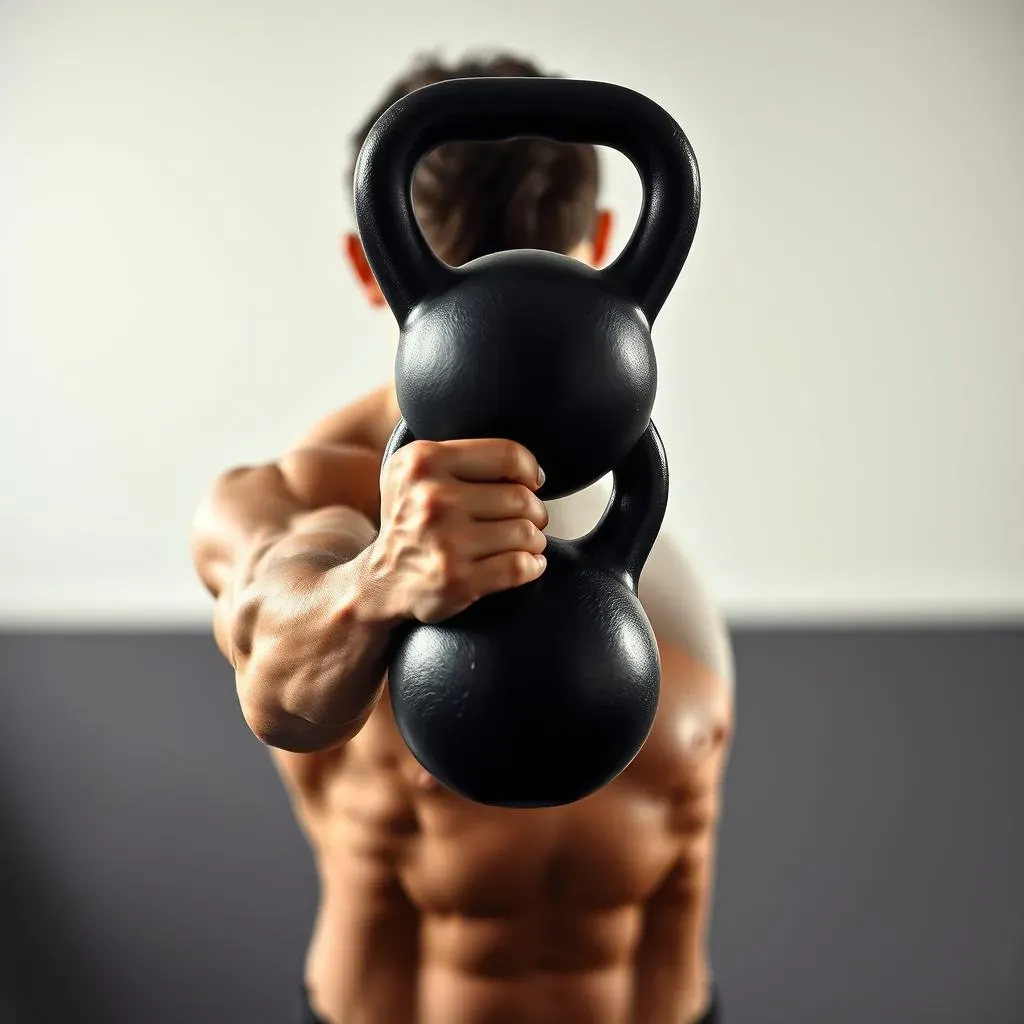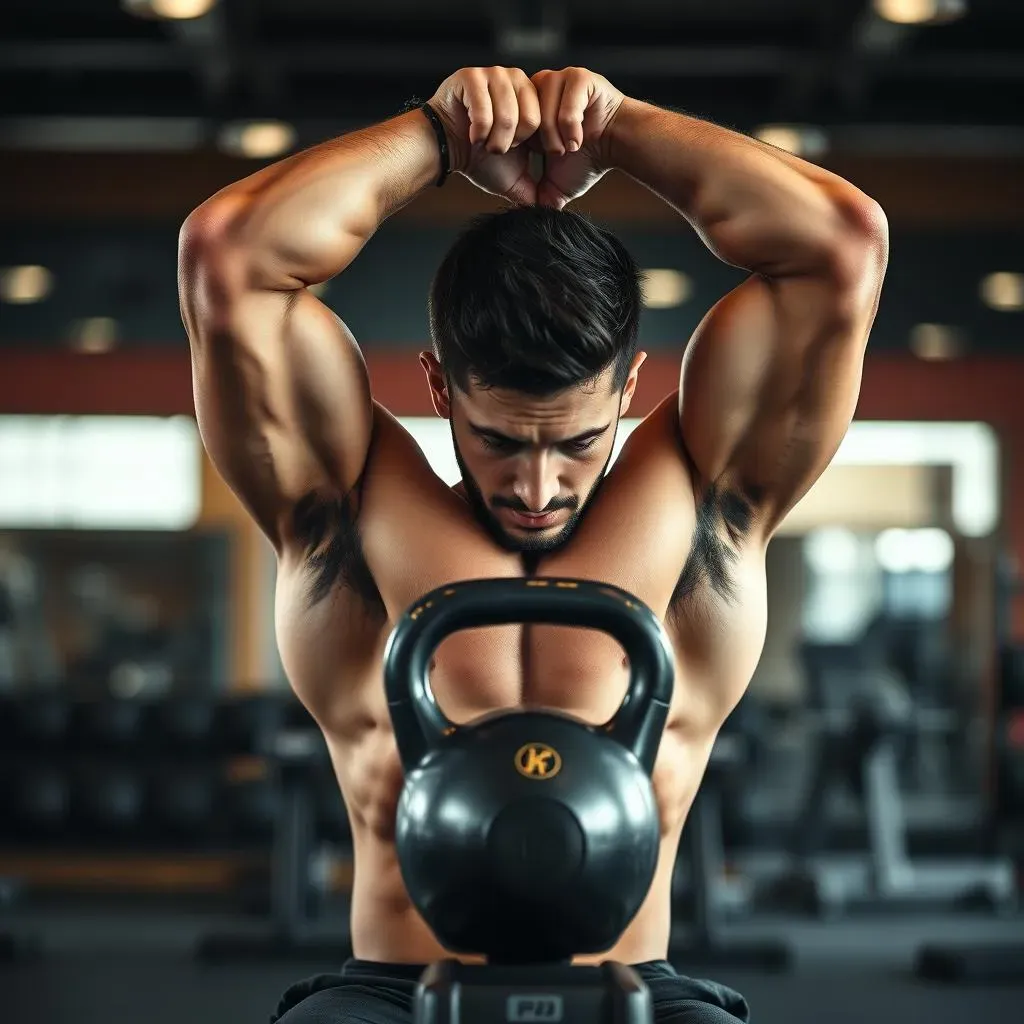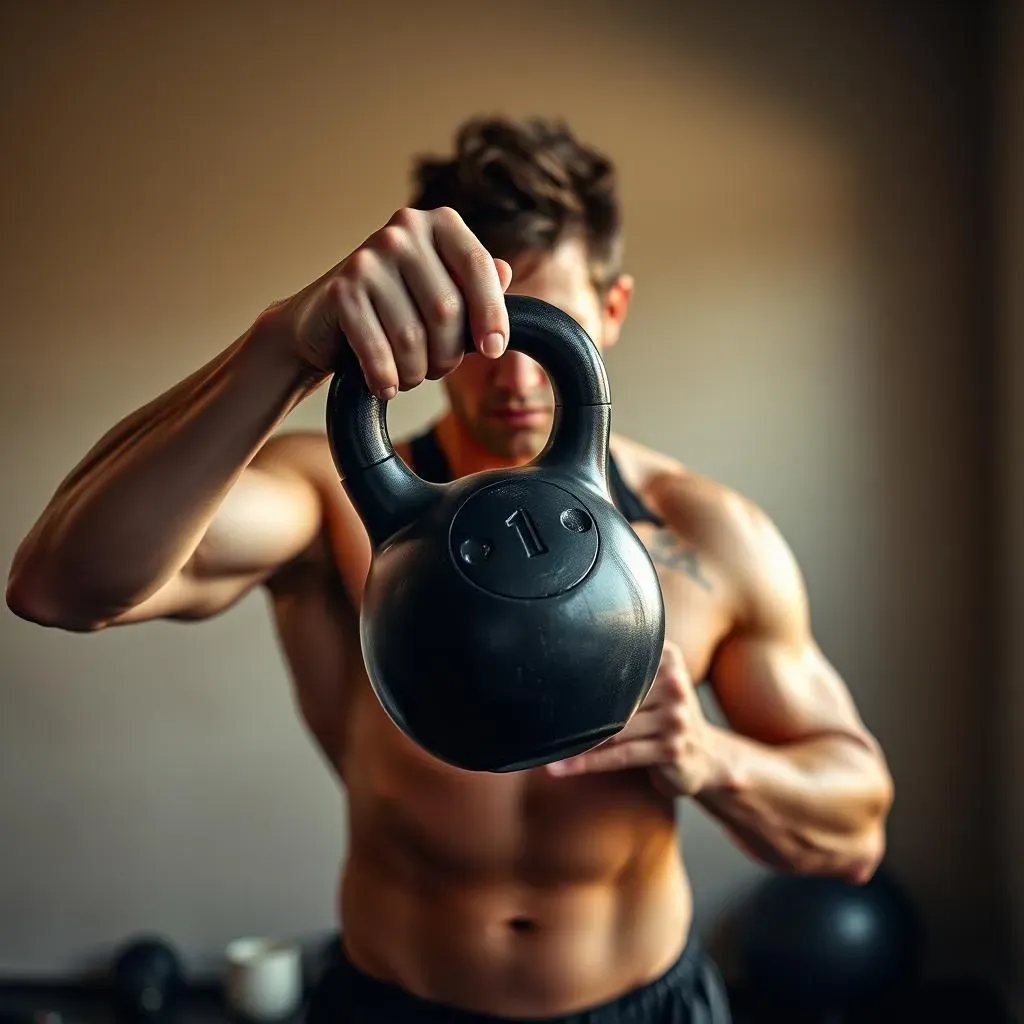Table of Contents
Tired of the same old chest workouts? Ready to shake things up? Then it's time to meet your new best friend: the kettlebell. Forget boring bench presses; we're talking about dynamic, functional movements that'll build serious chest strength. This isn't just about lifting heavy, it's about learning to control the weight, engaging your core, and sculpting a chest that’s both powerful and resilient. We'll explore why kettlebells are a fantastic tool for chest development, how they offer unique advantages over barbells and dumbbells. Then I will show you five super effective chest kettlebell exercises that you can incorporate into your routine right away. I will also share some important tips on how to get the most out of your kettlebell chest training, including how to progress safely and effectively. Whether you're a seasoned lifter or just getting started, this guide to chest kettlebell exercises will give you everything you need to get started. So, let’s get to it!
Why Kettlebells Are Awesome for Chest Workouts

Why Kettlebells Are Awesome for Chest Workouts
Beyond the Barbell: A New Chest Challenge
so you've probably seen people pumping iron with barbells and dumbbells, right? But have you ever thought about using kettlebells for chest day? I know, it sounds a little different, but trust me, it's a game-changer. Kettlebells aren't just for swings and squats; they're fantastic for building a strong, functional chest. The unique shape of the kettlebell forces your muscles to work in a different way than traditional weights. This means more muscle activation and better overall strength gains. I was skeptical at first, until I tried it myself and felt the difference. It’s like the weight is always trying to pull you off balance, which actually makes your muscles work harder to stabilize.
The Functional Advantage
What makes kettlebells so special for chest training? It's all about the way the weight is distributed. Unlike dumbbells, where the weight is evenly balanced in your hand, a kettlebell's center of mass is offset. This forces your muscles to engage in a more dynamic and functional way. Think about it: you're not just pushing weight; you're controlling it, stabilizing it, and moving it through space. This translates to real-world strength, not just gym strength. I remember the first time I tried a kettlebell floor press; I was surprised how much my core had to engage to keep the weight steady. It's a full-body workout disguised as a chest exercise.
Here are some reasons why kettlebells are great for your chest:
- Unique Weight Distribution: Kettlebells challenge your muscles in new ways.
- Functional Strength: Movements are more natural and translate to daily activities.
- Core Engagement: You'll get a core workout without even trying.
- Versatility: Kettlebells allow for a wide range of exercises.
Top 5 Chest Kettlebell Exercises for Strength

Top 5 Chest Kettlebell Exercises for Strength
Ready to Build Some Muscle?
Alright, so you're convinced that kettlebells are cool for chest workouts. Now let's get to the good stuff: the exercises. I've tried a bunch, and these five are my go-to's for building chest strength with kettlebells. We're not going to mess around with complicated stuff here, it’s all about effective moves that will get you results. I’m going to walk you through each one, explaining how to do them right. Remember, good form is key, so don't rush it. Let's get ready to feel the burn!
The Top 5
These aren't just random exercises; they're movements that will target your chest from different angles, giving you a well-rounded workout. I've found that mixing these into my routine keeps things interesting and helps avoid plateaus. These exercises are great for any level, from beginners to advanced, you can always tweak them up or down to fit your needs.
Exercise | Why It's Great | How to Do It |
|---|---|---|
Kettlebell Floor Press | Builds strength, great for beginners | Lie on back, press kettlebell up |
Kettlebell Bench Press | Classic chest move with a twist | Lie on bench, press kettlebells up |
Incline Kettlebell Press | Targets upper chest | Lie on incline, press kettlebells up |
Kettlebell Flyes | Stretches and builds chest muscles | Lie on back, lower kettlebells out to sides |
Deficit Kettlebell Push-Up | Increases range of motion | Place hands on kettlebells, do a push-up |
Tips and Tricks for Effective Kettlebell Chest Training

Tips and Tricks for Effective Kettlebell Chest Training
Grip It Right
so you've got your kettlebell, you’re ready to go, but hold up a sec! How you grip that thing makes a HUGE difference. It's not just about holding on tight; it's about how the kettlebell sits in your hand. For chest exercises, you want a secure grip that lets you control the weight without straining your wrists. Think of it like shaking hands with the kettlebell – firm, but not a death grip. I've seen people try to muscle through with a bad grip, and it just leads to discomfort and less effective movements. So, take a moment to get it right, it will pay off in the long run. Proper hand insertion is also important, make sure the handle sits comfortably in the palm of your hand, not too high or too low.
Progressive Overload and Double Progression
Now, you're probably wondering how to keep making progress with kettlebells since they don't always come in tiny weight increments like dumbbells. That's where progressive overload comes in. It's all about gradually increasing the challenge over time. You can do this by adding more reps, more sets, or decreasing rest time. But here's a neat trick I learned: double progression. Start with a weight you can handle for a set number of reps, say 8-10. Once you can comfortably do 12 reps, then you can increase the weight. It’s a bit like leveling up in a game, and it keeps you moving forward. Don’t get stuck in the same routine, keep challenging yourself.
Here's a quick guide to help you remember
- Start with proper grip: Secure, comfortable, and controlled.
- Progressive Overload: Increase reps, sets, or reduce rest.
- Double Progression: Increase weight once you hit higher rep ranges.
Listen to Your Body
Last but not least, and this is something I learned the hard way: listen to your body. If something doesn't feel right, don't push through it. Kettlebells are fantastic, but they’re not magic. If you're new to kettlebells, start light and focus on your form, it’s better to do less with good form than to do more with bad form. If you’re feeling pain or discomfort, take a break, and assess the situation. There’s no point in pushing too hard, and end up sidelined because you didn’t pay attention to the signals your body was giving you. It’s not a race, it’s a journey, and the goal is to stay consistent and healthy.
Wrapping Up Your Kettlebell Chest Journey
So, there you have it, a solid introduction to the world of chest kettlebell exercises. We've covered the reasons why kettlebells are a great choice for chest training, explored five powerful exercises to build strength and muscle, and shared some tips to help you along the way. Remember, consistency is key. Don't expect to become a kettlebell master overnight. Start with lighter weights, focus on your form, and gradually increase the challenge as you get stronger. Kettlebells are a fantastic tool for building a powerful chest, but they're even better when used with knowledge and intention. Now, go grab that bell and get to work!